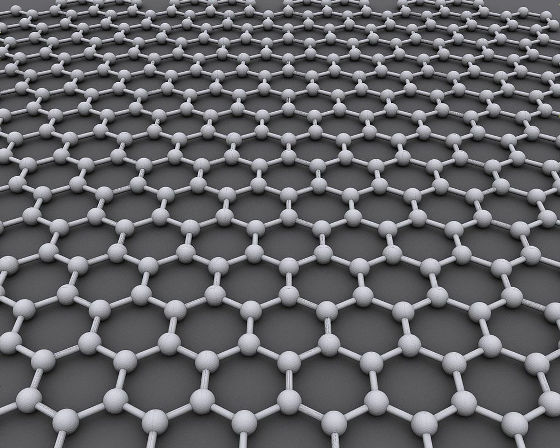Possibility to produce thin films that desalinate seawater using graphene at low cost and in large quantities
It has a special shape that carbon atoms spread in a single layer "Graphene"Is a material expected to be used in various fields such as semiconductor materials, catalysts, and storage terminals. British researchers have shown the possibility of using this oxide film of graphene as a "thin film to desalinate sea water".
Tunable sieving of ions using graphene oxide membranes: Nature Nanotechnology: Nature Research
http://www.nature.com/nnano/journal/vaop/ncurrent/full/nnano.2017.21.html
Graphene-based sieve turns seawater into drinking water - BBC News
http://www.bbc.com/news/science-environment-39482342
When trying to use a single layer of graphene itself as a filtration membrane, hexagonal holes are too small so that it is required to evenly open small holes through which water molecules can pass, but this is technically difficult. So, a research team such as Professor Raul Neel of the University of Manchester said that graphene oxides incorporating oxygen atoms in graphene were used to enlarge the size of the holes, then large molecules such as sodium chloride failed to pass through, only water molecules I am studying how to adjust the size of the hole so that it can pass through.

When salt is dissolved in water, shells are made so that water molecules surround the surroundings. Thanks to this shell made of water molecules, we can remove salt from seawater if we can create a hole that can pass by water molecule alone, but can not pass the salt covered by water molecule shell.

Professor Neel and others have said that the thin film made of graphene oxide has the property of slightly expanding when infiltrating. By sandwiching this thin film with wall made of epoxy resin, it seems that the degree of expansion of graphene oxide can be adjusted. Moreover, while no way to produce graphene in large quantities has yet been found, this graphene oxide can easily make thin films from solution. Single layer graphene is very expensive as it is not yet established how to mass-produce graphene inexpensively, but graphene oxide produced by Professor Neel and others is easy to mass-produce for monolayer graphene, material cost Professor Neel thinks that there are advantages in terms of terms.
According to Professor Neel, if it is possible to make a thin film of porous graphene oxide having a hole of 1 nanometer close to the size of the water molecule, only small water molecules can be moved by applying pressure, so it is layered and seawater It seems that there is a possibility that it can be used as a filtration device for extracting water from water, and the durability when using graphene oxide as a membrane for desalination is investigated at the University of Manchester.
Currently, membranes made of resin materials are commonly used for desalination of seawater. For industrial use as a seawater desalination device, a membrane that is durable even if it is immersed in seawater for a long time is required. Durability against dirt affects the replacement cycle inside the equipment, and it is also an important factor as it relates to the operating cost of the desalination equipment.

Dr. Lamb Debanazan of Pacific Northwest National Laboratory acknowledged that there are many things to study to manufacture graphene-based oxide films cheaply at the industrial level, "While physically controlling the spacing of the thin films, water The method of selectively separating ions from these methods opens the way for the synthesis of inexpensive membranes for desalination, "he said, highly appreciating the methodology of the University of Manchester.
The United Nations expects 14% of the world's population to face the water shortage crisis by 2025. In addition, due to the sudden climate change, there is a possibility that water supply shortages may occur in urban areas, even in modern countries, seawater desalination technology requires a large investment. With desalination technology it is ultimately required to produce drinking water from seawater and wastewater with minimal energy, not limited to thin films using graphene oxide, various technologies are being investigated by researchers all over the world It is being researched and developed.
Related Posts:







